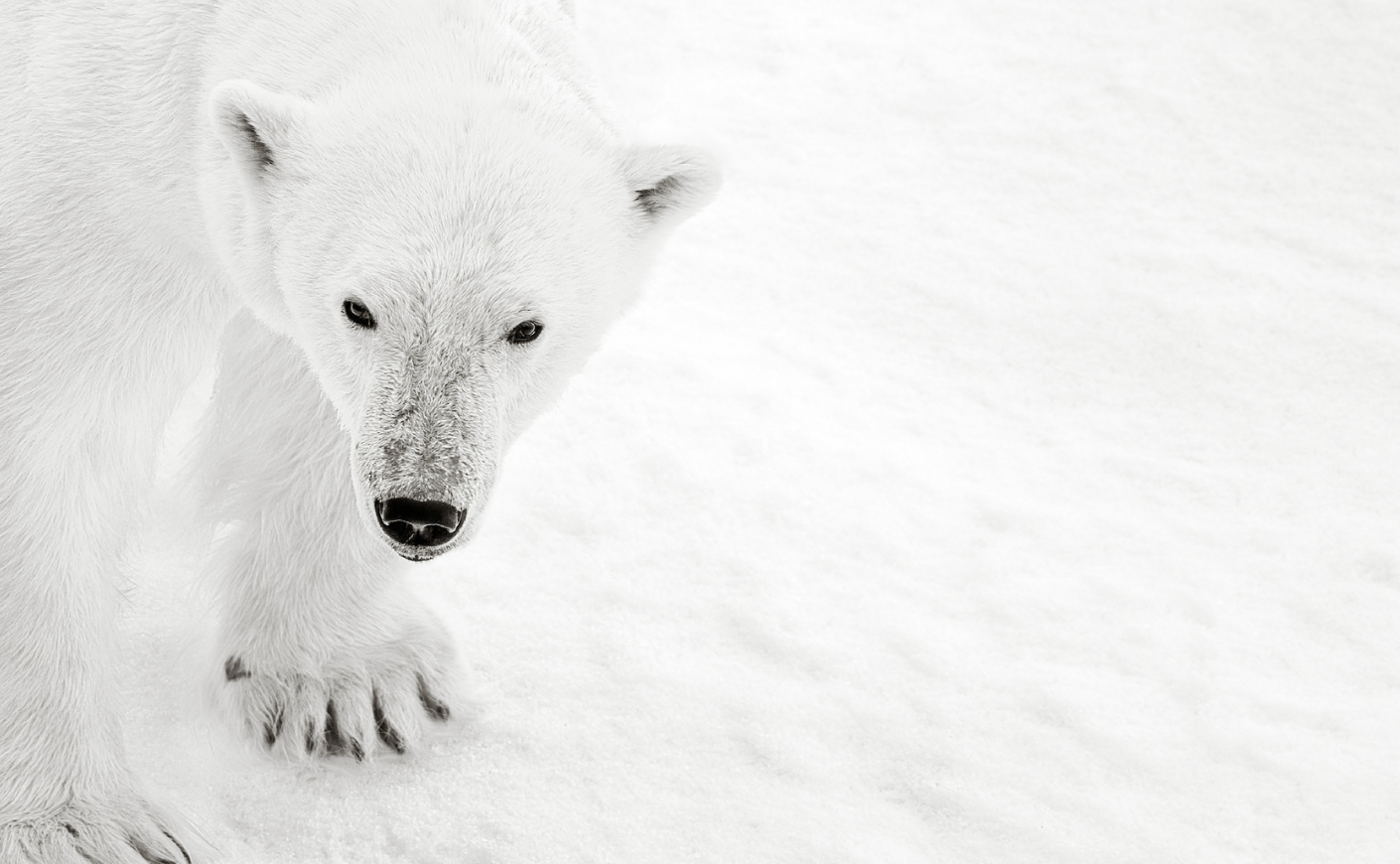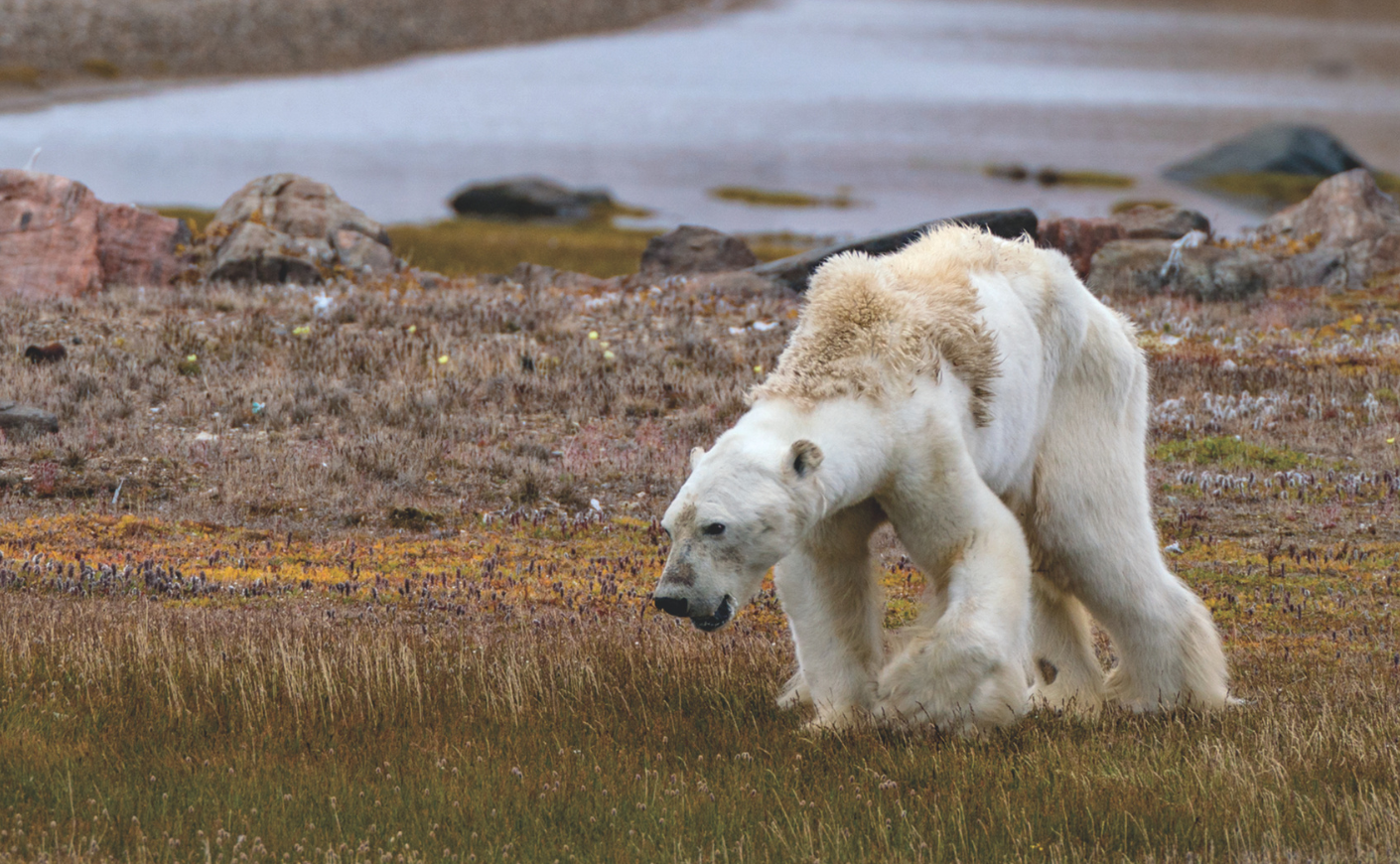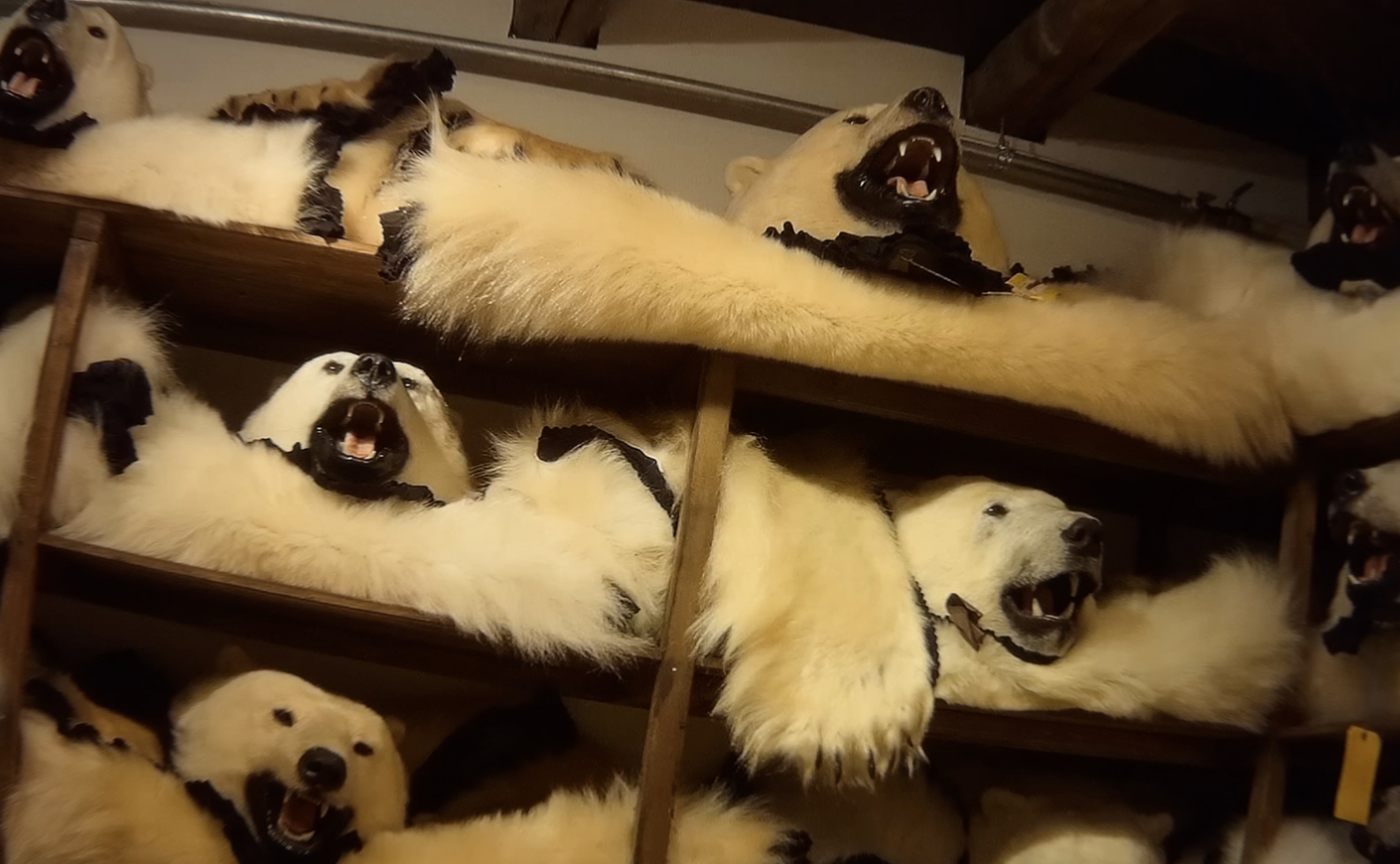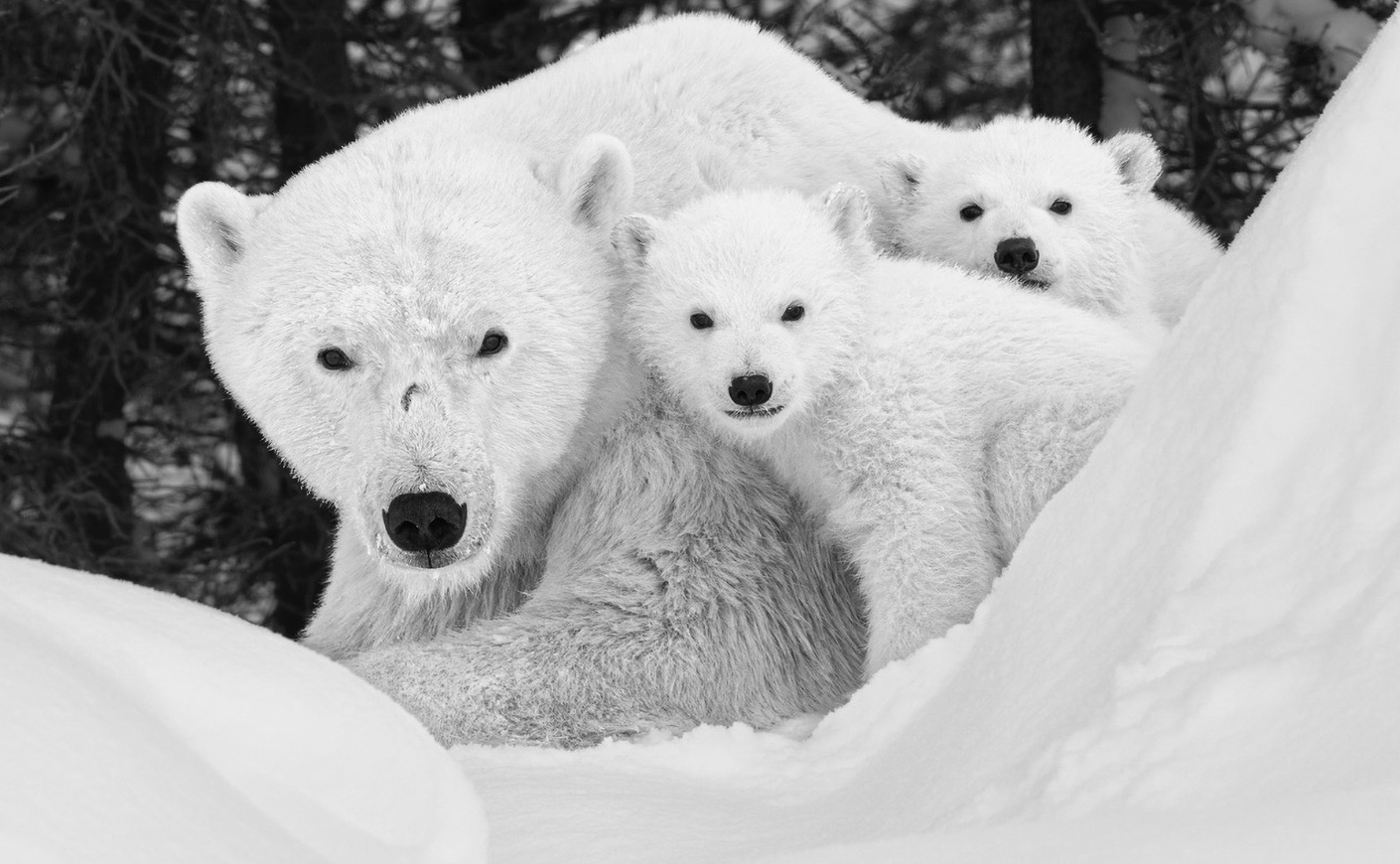I was just four years old when my family moved to Baffin Island, Canada, where we lived in a remote village among the Indigenous Peoples known as the Inuit. I spent most of my time outside, roaming the sea ice, playing under the aurora borealis, and falling in love with the raw beauty of the world around me. The Inuit became my mentors, teaching me how to read the ice, make sense of the wildlife — even the polar bears — and ultimately survive in such a harsh environment. Those lessons shaped not only my childhood, but also my career.
Today’s world feels nothing like the one I grew up in. Now, we carry the cumulative knowledge of humanity in our pockets, yet somehow misinformation has never been more widespread. Conflicting narratives blur the line between fact and fiction, delaying action and eroding trust in science. Even though scientific evidence strives to be objective, it is always filtered through human perspectives. In conservation, that subjective interpretation can determine whether species like polar bears receive stronger protections or remain vulnerable.
Experts largely agree polar bears are at serious risk as sea ice melts. Their survival hinges on healthy, predictable ice, which serves as a platform for hunting seals in the late fall, winter, and spring. However, the Arctic is warming four times faster than the global average, and this year, Arctic sea ice extent — the total area of ocean covered by ice — hit a record low. Studies link this loss with worsening physical condition, body size, and reproduction in polar bears.
But melting ice is only part of the story. Few realize that polar bears are also trophy hunted — killed not for food, but for sport — with their fur sold legally around the world. For me, though, these animals have always been more than statistics or hides.

The precarious state of polar bears
Throughout my life, I’ve had thousands of encounters with polar bears. I worked as a guide in Churchill, Manitoba, leading tours along the shores of Hudson Bay, where the bears gather each fall to wait for the sea ice to return. I’ve studied them with scientists, tracked them with Inuit hunters, and photographed them in some of the most remote corners of the Arctic. I have not only seen, but personally experienced the Inuit’s relationship with polar bears. It is a connection of survival, tradition, and cultural identity, with reverence for the animal that gives its life.
But over time, that relationship has shifted as outside forces have crept in.
In 1973, the five polar bear nations — the U.S., Canada, Greenland, USSR (now Russia), and Norway — signed an agreement to ban commercial hunting after years of uncontrolled trophy kills. The agreement made an exception for Indigenous traditional hunts. But Canada found a loophole: Indigenous hunting tags could be sold to wealthy foreign clients for guided trophy hunts, or hides auctioned internationally.
As a result, polar bears have been transformed from a source of subsistence into a luxury commodity. Canada’s system financially rewards hunting more bears, driving hunting beyond traditional needs. Foreign trophy hunters from some countries can fly in, pay a hefty fee, and leave with a rug for their living room floor. Others don’t even need to set foot in the Arctic — polar bear skins are still legally sold in stores around the world.
Looking back on the starving polar bear that made headlines in 2017, we could never be certain what led to its condition. It could have been climate change, but I couldn’t help but wonder if a trophy hunter injured it. Foreign hunters don’t have the same experience as Inuit hunters. A poorly placed shot could shatter a hind leg, leaving the animal unable to hunt and slowly starving. We may never know what happened to that bear, but one thing is certain: human actions, in many forms, are shaping the fate of polar bears.

The politics of uncertainty
So with polar bears facing increasing threats, why has commercial trade been allowed to continue for decades?
Earlier this year, The Guardian published the results of a two-year investigation into the polar bear fur trade. Those findings, also featured in the documentary Trade Secret during Climate Week in New York City, revealed how political maneuvering and selective science have kept the trade in place despite mounting risks to the species.
Polar bears live in some of the harshest, most remote environments on Earth, making them notoriously difficult to study. Population research often relies on small sample sizes and broad extrapolations, leaving major uncertainty about overall numbers. That uncertainty has created room for stakeholders to cherry-pick data that fits their position.
Over a decade ago, the U.S. and Russia pushed for an Appendix I listing under the Convention on International Trade in Endangered Species (CITES), which would have prohibited international commercial trade. Canada opposed the move, arguing polar bears weren’t at risk of extinction and trade wasn’t detrimental to the species. The proposal failed, the debate remains unsettled, and polar bears remain unprotected.
But the science has never been clear-cut. Even the IUCN Polar Bear Specialist Group was deeply divided on stronger protections — yet its internal dissent was left out at CITES, presenting a false sense of scientific consensus.
Part of the problem is that population counts are often unreliable or incomplete. It’s difficult to be certain how many polar bears exist today or whether numbers are declining. But population size isn’t the only way to measure extinction risk.

There is mounting evidence of sea ice loss and declining health in many subpopulations of polar bears. Experts use these indicators to model long-term impacts, showing how habitat loss will inevitably affect polar bear survival. More than 90 environmental NGOs, including the science-based Natural Resources Defense Council (NRDC), have argued that polar bears do in fact qualify for stronger protections. Even CITES rules themselves say that a lack of scientific certainty should never be an excuse to delay action.
Meanwhile, there’s no solid evidence that commercial trade is actually sustainable. When a species is already under pressure, additional stressors only accelerate its decline. Hunters target the largest, fittest males — the animals that would be most resilient to climate change. If you remove enough of the strongest bears from the gene pool, you risk pushing the population closer to collapse.
Looking ahead
The fur trade is often framed as an Indigenous rights issue. But under CITES, traditional subsistence hunting and commercial international trade are not the same. An Appendix I listing wouldn’t infringe on Inuit hunting rights. It would only ban international commercial trade and restrict polar bear trophy imports in many countries.
As for Indigenous livelihoods, the trade’s profits are limited, often benefiting a small group of guides and middlemen rather than entire communities. There are better ways to support Indigenous communities. In other parts of the world, former shark fishermen have shifted to ecotourism. The Arctic could do the same — with an economy built on living bears instead of dead ones.
While most people only know polar bears from TV or fundraising campaigns, for me they were real, tangible beings that lived in my backyard. Their survival depends on choices made far from the ice they roam. At the next CITES meeting later this year, polar bears won’t even be on the table for discussion, even though they should be.
Still, the debates that will take place matter, because they decide whether we continue commodifying vulnerable species amid Earth’s sixth mass extinction — and this time, the world is watching.
Paul Nicklen and Cristina Mittermeier co-founded SeaLegacy in 2014. SeaLegacy’s mission is to inspire people to fall in love with the ocean, amplify a network of changemakers around the world, and catalyze hands-on diplomacy through hopeful, world-class visual storytelling. For more updates on their meaningful work, learn more about SeaLegacy, and subscribe to Ripple Effect, Katie Couric Media’s sustainability newsletter.









